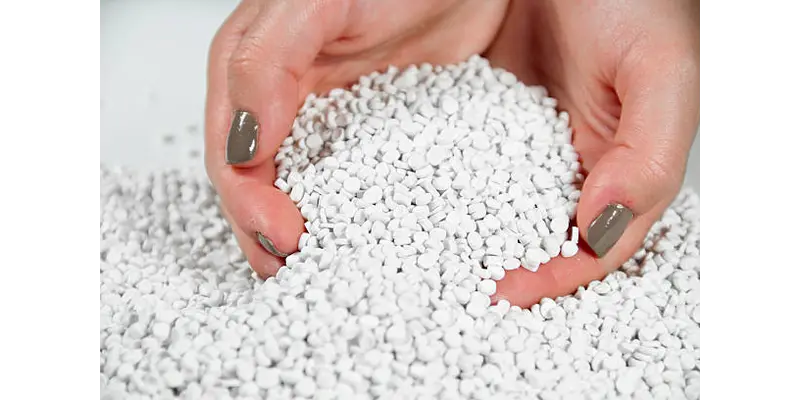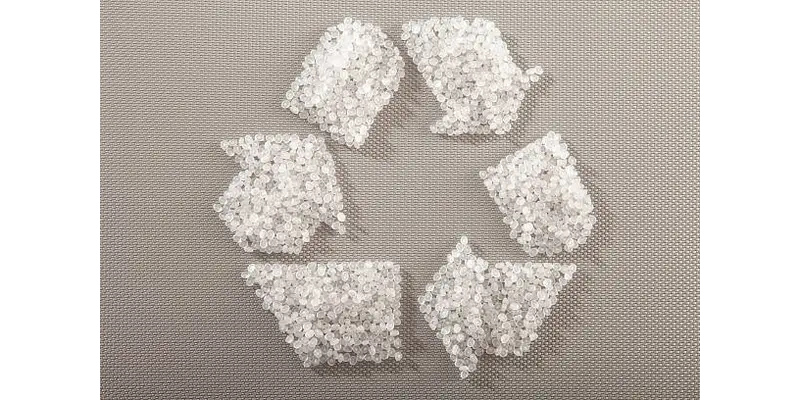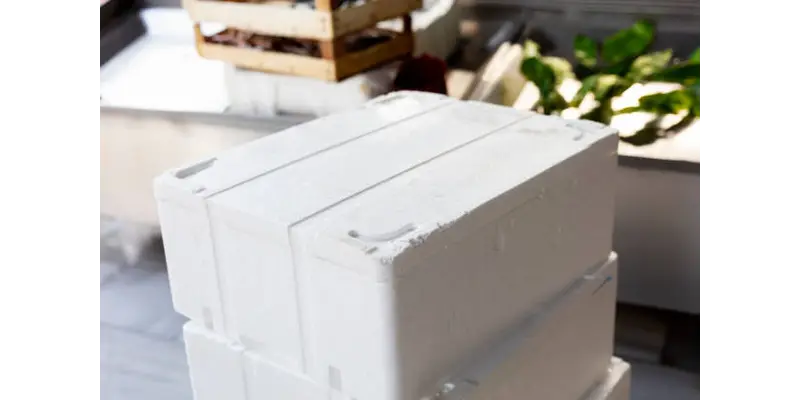“Does EPS foam absorb water?” This question prompts an exploration into the water absorption properties of EPS foam, delving into its structure, mechanisms, and implications.
What is EPS Foam?

EPS foam, also known as expanded polystyrene foam, is a lightweight, rigid, and versatile material widely used in various industries for insulation, packaging, and construction purposes.
It is derived from polystyrene, a thermoplastic polymer made from the monomer styrene.
The manufacturing process of EPS foam involves expanding polystyrene beads using steam and then molding them into desired shapes. During expansion, the polystyrene beads are subjected to heat, causing them to soften and expand as the trapped air within the beads expands. This process results in a cellular structure with closed, interconnected cells, giving EPS foam its characteristic lightweight and insulating properties.
EPS Structure

Let’s delve into EPS structure:
Polystyrene Polymer
EPS is derived from polystyrene, a synthetic polymer made from the monomer styrene. Polystyrene is a thermoplastic material, meaning it can be melted and reshaped repeatedly under the influence of heat.
Bead Form
EPS starts as small, spherical beads of polystyrene. These beads are typically about 0.3 to 2.0 mm in diameter.
Expandable
The polystyrene beads are expandable, meaning they can be enlarged through the application of heat and pressure. This expansion process is what gives EPS its characteristic cellular structure.
Expansion Process
During manufacturing, the expandable polystyrene beads are subjected to steam or a blowing agent, such as pentane. The heat causes the polystyrene beads to soften and expand rapidly, increasing in volume by up to 40 times.
Cellular Structure
As the beads expand, they fuse together, forming a cellular structure with millions of interconnected, closed cells. These cells are filled with air, which provides EPS with its lightweight and insulating properties.
Closed-Cell Nature
The majority of the cells in EPS foam are closed, meaning they are completely surrounded by solid polystyrene material. This closed-cell structure contributes to EPS’s excellent thermal insulation capabilities by minimizing heat transfer through convection.
Rigid and Lightweight:
The cellular structure of EPS foam results in a material that is rigid and lightweight. This makes it easy to handle and transport, while still providing strength and durability.
Customizable Shapes
EPS foam can be molded into virtually any shape or size, making it highly versatile for various applications. It can be molded into sheets, blocks, or custom-molded products to suit specific needs.
Understanding the structure of EPS foam is crucial for understanding its properties, including its thermal insulation, lightweight nature, and versatility. This knowledge forms the basis for its wide range of applications, including insulation in buildings, protective packaging for fragile items, and even decorative and artistic uses.
Structure of Eps Foam

Many people will ask Does EPS Foam Absorb Water? As we all know, we use EPS foam when freezing seafood. Today we will summarize it. EPS is a closed cell and cannot absorb water. During the process of moulding a block, tiny channels are formed between the EPS particles. If the material is immersed in water these tiny channels can be filled with water. After immersion for more than 360 days, there may be up to 6% water content by volume which has entered the channels.
Even under such an adverse and rare condition of prolonged saturation, EPS suffers little adverse effect. It maintains its shape, size, structure, cohesion and physical appearance. The ability of EPS to resist the adverse effects of moisture is exemplified by its widespread use in floats, marinas and other applications, which involve full or partial submergence in water for prolonged periods of time.
Does EPS Foam Absorb Water?

Yes, EPS foam can absorb water.
Expanded polystyrene (EPS) foam is known for its lightweight and insulating properties, making it a popular material for packaging, insulation, and construction. However, one of its drawbacks is its susceptibility to water absorption.
EPS foam is made up of closed-cell foam beads that are expanded and fused together during manufacturing. These closed cells are filled with air, which gives EPS its insulating properties. However, if these cells are compromised, either by physical damage or exposure to certain solvents, they can allow water to enter the foam structure.
Once water infiltrates EPS foam, it can be absorbed readily due to the porous nature of the material. The water can seep into the open spaces between the foam beads and gradually spread throughout the material. This absorption can cause the EPS foam to become heavier and lose some of its insulating properties. Additionally, waterlogged EPS foam may become structurally weaker and more prone to damage.
Various factors can influence the extent to which EPS foam absorbs water, including the density of the foam, the duration of exposure to water, and environmental conditions such as temperature and humidity. Higher-density EPS foam generally absorbs less water than lower-density foam due to its more compact structure.
To mitigate water absorption in EPS foam products, manufacturers may incorporate moisture-resistant coatings or additives during the production process. Additionally, proper storage and handling can help prevent prolonged exposure to moisture, thereby reducing the risk of water absorption.
Conclusion

Many people will ask Does EPS Foam Absorb Water?-Yes, it is waterproof. EPS foam usually does not absorb water because its high closed cell structure seals most of the bubbles and prevents moisture from penetrating.
However, tiny open pores or damage can allow moisture to penetrate. Water absorption will increase the density of EPS foam, reduce the insulation performance, and promote the aging and decomposition of the foam.
To reduce the impact of water absorption, waterproofing measures can be taken, such as coatings, sealants, optimized closed cell structures, etc. These methods help protect EPS foam from moisture, ensuring its long-term stability and durability in a variety of applications.
